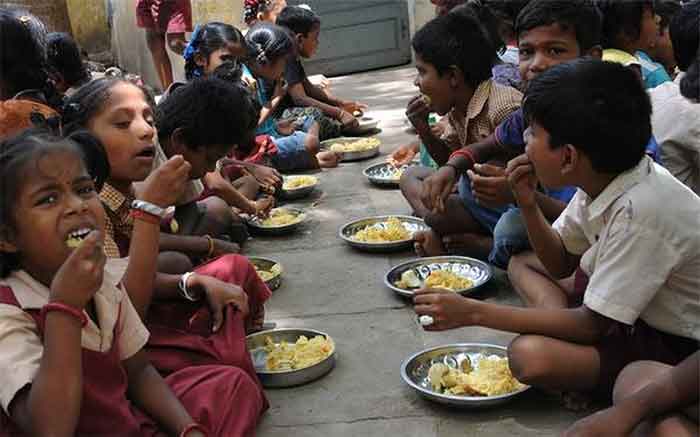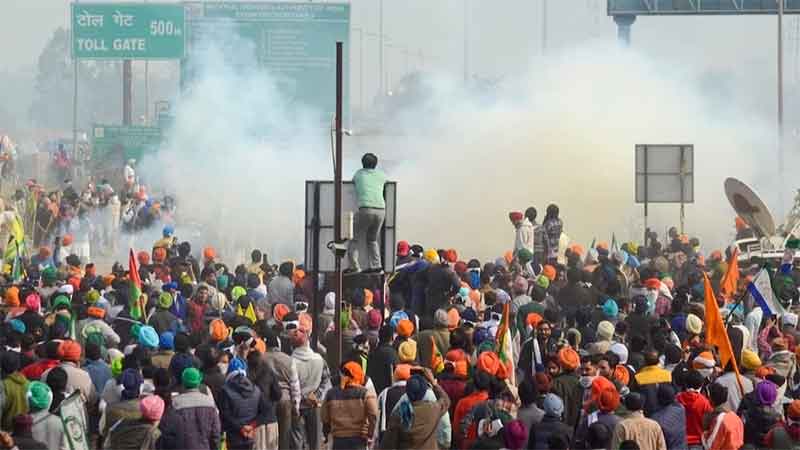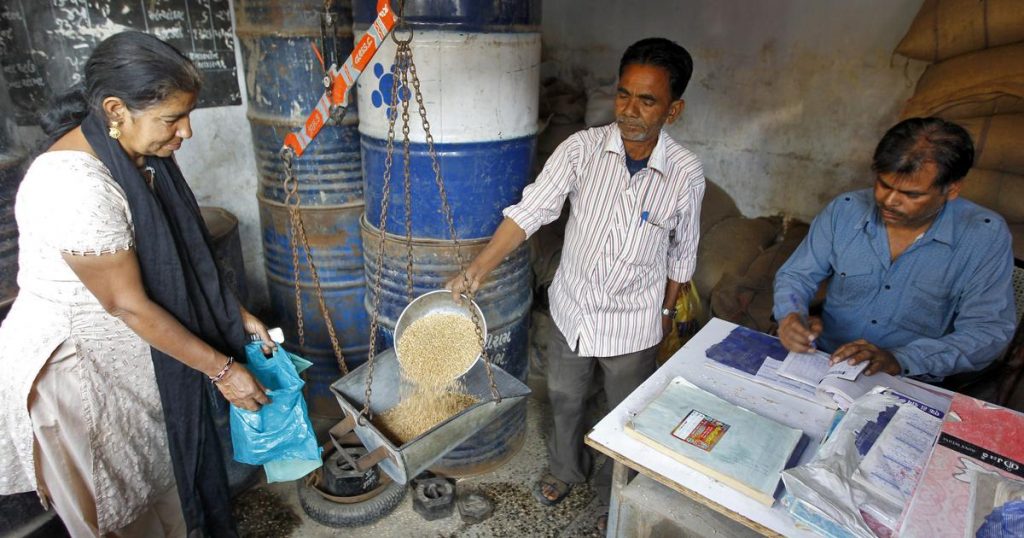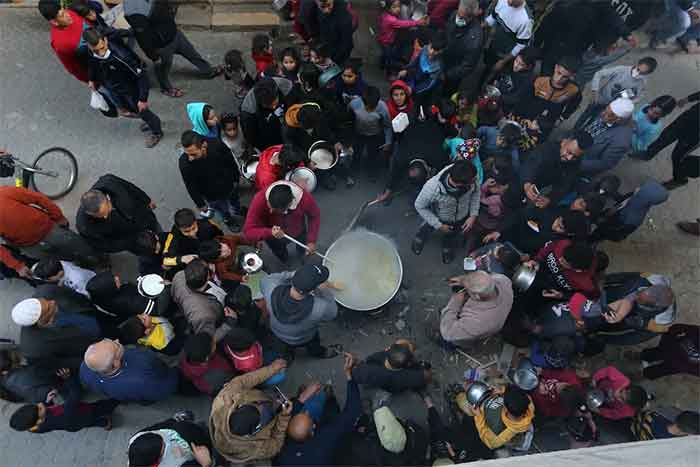
Food is the basic need and fundamental right of every human being. The United Nations (1948) Universal Declaration of Human Rights (Article 25,1948) used an ecological perspective rooted in social justice to define “right to food”. It emphasizes ” quantitatively and qualitatively adequate and sufficient food corresponding to the cultural traditions of the people to which the consumers belong, and which ensure a physical and mental, individual and collective, fulfilling and dignified life free of fear” ‘. Therefore ensuring food security is the responsibility of every nation. Food security has been defined in 2002 by FAO as Ensuring that all people at all times have both physical and economic access to sufficient, safe and nutritious food which meets their dietary needs and food preferences for an active and healthy life”. India has achieved self-sufficiency in food grains in the 1970s. It has consistently been able to provide enough food for its entire population since the mid-1990s, with a decline in production between 2014 and 2016 caused by drought. But India needs to take various new and improved initiatives to enhance and improve its food security as it faces supply constraints, water scarcity, low per capita GDP, and inadequate irrigation. The Economic Survey said that India ranked 76th in 113 countries assessed by The Global Food Security Index (GFSI) in 2018, based on four parameters – affordability, availability, quality, safety, and natural resources. Therefore food security is a complex phenomenon, which includes a range of factors i.e. poverty, income distribution, international trade markets, agricultural development, human resources management and development policies and programs of the government, population growth, and climatic conditions. Poverty being the main cause of food insecurity as poor households are not able to fulfill their square meals. Thus results in malnutrition, undernourishment, and various health issues. Developing countries, especially India faces the problem of food insecurity due to the economic crises.
Despite various schemes and programs, Initiated by the Indian government to counter food security issues Indian’s biggest challenge remains for ensuring the population the nutritional and enough food. The government introduced many major programs to eradicate food security issues such as the public food distribution system (PDS), Integrated Child Development Scheme (ICDS), Mahatma Gandhi National Rural Entrepreneurs Guarantee Scheme (MGNREGS), Antyodaya Anna Yojana (AAY), etc. But these programs fail to reach every section of the society and hunger continue to make vulnerable and deteriorated situation of the poor people. The International food policy research Institution (IFPR) classified the status of hunger into five categories–low, moderate, serious, alarming, and extremely alarming, India falls into the category of alarming. Further studies have indicated that consumption and expenditure on food grain have decreased up to a certain level due to an increase in food prices and enlargement in the consumption of non-food items. Despite the economic growth in recent years around one-third of Indian’s population still lives the poverty line. All these estimates indicate the existence of food insecurity at the micro-level in terms of either lack of economic access to food or lack of absorption of food for a healthy life.
No doubt the Government of India introduced The National Food Security Act, 2013 (NFSA 2013). It includes the Midday meal scheme, the Integrated Child Development Services scheme, and the Public Distribution System. Further, the NFSA 2013 recognizes maternity entitlements. The main problem in the implementation of the NFSA is how to identify the beneficiaries? Although the Act purposes to cover 67 percent of the population, it does not provide any identification criteria based on which beneficiaries will be chosen. The socio-economic and caste census (SECC) data can give some direction on how this can be done, but it does not provide a clear estimate. Instead of identifying the poor, it would be better to adopt an ‘inclusive approach’ in which all poor and marginalized populations are included and rich people are kept out, It requires proper verification and counter checks by various departments without being involved in corruption practices. Otherwise, the NFSA will fail to reach its beneficiary or target population.
The overall impact of ICDS and MDM scheme on malnutrition has remained very limited due to a meager allocation of resources, faulty project, and carelessness in implementation. The poor quality of food served under MDM in many schools in different states across the country is a serious cause of concern. In fact, in 2012, the corporations (comprising North, south, and East corporations of Delhi states) found 83 percent meals nutritionally deficient. Moreover, utensils and dining areas were often found to be unclean and unhygienic. The most serious problem in ICDS is related to implementation and accountability. Since children have no ‘voice’ in the system, there is no self-correction mechanism. There is rampant corruption in each phase of the implementation of these projects. Thus results in failure of ICDS and midday meal scheme
PDS (Public Distribution Scheme) was established to provide essential consumer goods at cheap and subsidized prices. The main agency, which provides food grains to the PDS, is the Food Corporation of India (FCI) set up in 1965. Its primary duty is to undertake the purchase, storage, movement, transport, distribution, and sale of food grains and other foodstuffs. But the PDS has been criticized on various grounds. The main motive of PDS was to manage and distribute food stock to the poorest of the poor at affordable and cheap prices so that hunger and malnutrition can be eradicated from the country. But it was found that the poor people are least benefited i.e. only 20% of households are provided the stock with the cost-effectiveness which is very small. Another critic of PDS is the burden of food subsidy, which puts several fiscal burdens on the government. There is also the inefficiencies in the operations of FCI as some researchers and The Bureau of Industrial Costs and Prices (BICP) of the Government of India (GOI) have pointed out several inefficiencies in the operation of the Food Corporation of India. The economic cost of FCI foodgrain operations has been rising because of an increase in procurement prices and other costs that is distribution cost and carrying costs. The inefficiencies in the operations of FCI are due to its highly centralized and bureaucratic mode of operation. To rectify this, experts advocate the ‘toning up’ of the personnel and working of FCI on the one hand and reorganizing the food security system on the other hand. Another flaw in the PDS is that the ration cards are provided to only those people who have their residential addresses and those who are migrant laborers and homeless are left out of the food security system.
Bisma Ahad, Research scholar university of Kashmir and can be mailed at [email protected]
SIGN UP FOR COUNTERCURRENTS DAILY NEWSLETTER
















































